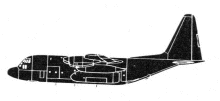Incident Overview

Description
The Cessna 208B Supervan 900 was operating a charter flight from Kiunga to Eliptamin Airstrip in Papua New Guinea and experienced a runway excursion and nose gear collapse after landing on runway 13. There were no injuries reported. The pilot stated to PNG AIC investigators that before entering the final approach, he extended full flap and maintained a speed of about 90 knots. The wind within the circuit area was calm. During the final approach, he started feeling wind gusts against the aircraft. The pilot stated that at that stage, he had passed the committal point. He therefore continued to land. The pilot stated that immediately after touchdown, the aircraft became airborne. The aircraft settled back onto the ground again. As the aircraft continued its roll, the aircraft became airborne again. Shortly after settling onto the ground the second time, the aircraft rolled off the end of the airstrip. The aircraft subsequently impacted the embankment of a drain which runs along the edge of the airstrip. The aircraft came to rest upon impact. The pilot subsequently shut down the engine instructed the passengers to follow him out of the left cockpit door. Causes [Contributing factors]: ? The flight to Eliptamin from Kiunga Airport was outside the operational times recommended in the company?s Operations Manual. ? The aircraft was overhead the airstrip at a height of about 3,000 ft AGL, which was higher compared to the pilot?s previous flights to Eliptamin where the altitude did not exceed 1,700 ft AGL when overhead the airstrip. ? The AIC believes that the overhead inspection was conducted at a far too high altitude to properly assess the surface condition of the airstrip and the wind behaviour. ? Excessive groundspeed on approach and touchdown due to the tailwind was attributed to the localised weather present at Eliptamin Airstrip. ? The pilot could not identify that there were strong winds present at Eliptamin Airstrip. ? The pilot lacked awareness of the windsock located at the approach end of runway 14, and the windsock located at the departure end of the runway near the parking bay, did not give the appropriate indication of the prevailing winds at Eliptamin Airstrip. ? The tailwind component that was experienced on final approach and touchdown was beyond the allowable limit of 10 kts as stated in the Operator?s Manual and the Aircraft Flight Manual. ? The aircraft landed with excess speed which caused the aircraft to bounce off the ground upon touchdown on the threshold. The aircraft was then pushed up strip by the prevailing airstrip wind conditions, while in the air. The pilot attempted to control the aircraft and managed to get the aircraft back onto the ground, however, the aircraft bounced off the ground once more and travelled further up strip while in the air. The pilot finally got the aircraft back onto the ground, however, at that point, there was no sufficient runway available to bring the aircraft to a stop. ? While in the air both times following the touchdown at the threshold, the aircraft was pushed further down the runway and eventually ran out of runway length and impacted the embankment at the end of the runway. ? On-site investigation team observed from the amount of mud deposits on the aircraft?s wheels and airframe that the strip surface was not completely dry at the time of the accident and may have had a negative impact on the braking capacity of the aircraft during the landing roll.
Primary Cause
Excessive groundspeed and tailwind component during approach and touchdown, combined with the pilot?s failure to properly assess wind conditions and the aircraft?s operational parameters.Excessive groundspeed and tailwind component during approach and touchdown, combined with the pilot?s failure to properly assess wind conditions and the aircraft?s operational parameters.Share on:


